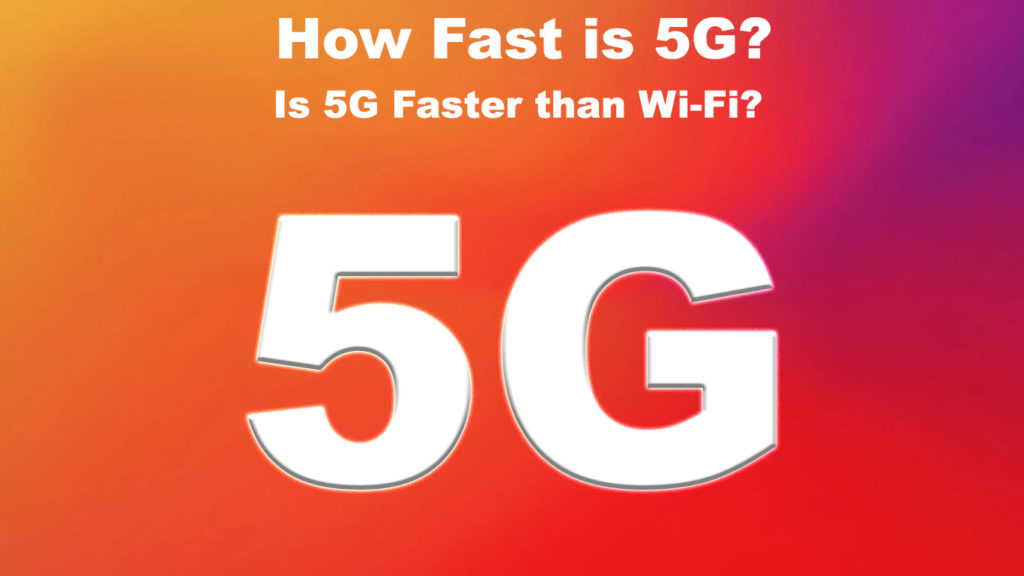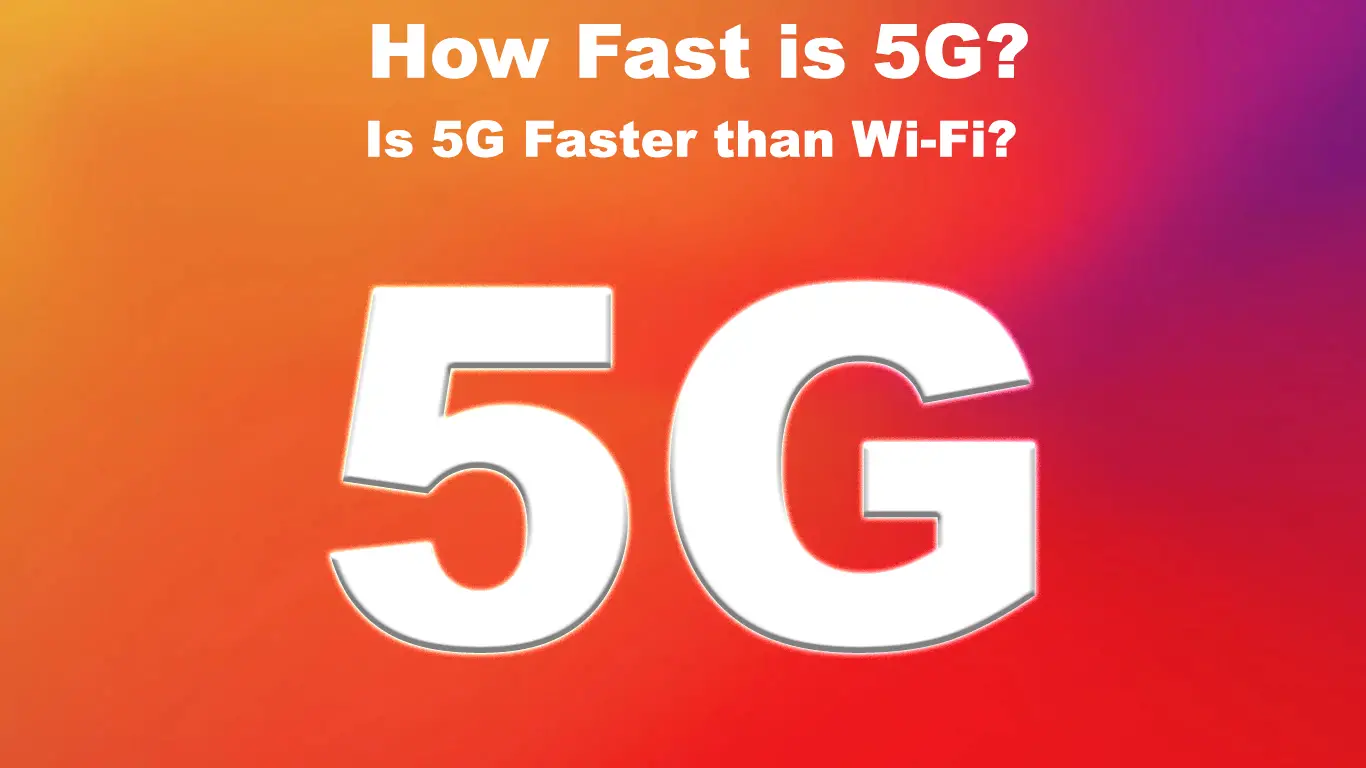Not to be confused with the 5 GHz Wi-Fi band supplied by routers, 5G refers to the latest generation of mobile networks (5th generation). 5G offers much better performance compared to the previous 4G network, but how fast is 5G?
Generally, a 5G mobile network boasts 10 times faster speeds than 4G and can go up to 100 times faster. However, speed is not the only measure that 5G is doing better.
It all started with 1G – the first generation of mobile networks in the ‘80s, which provided the analog voice. Then, 2G came along in the early ‘90s, which upgraded to digital voice. 3G introduced the all-important mobile data about ten years later. During this period, app development started to pick up alongside the dot.com bubble. After another ten years or so, 4G came into the picture, bringing along mobile broadband, making more interactive applications possible.
Notwithstanding some hiccups and unavoidable delays in deploying the 5G network, it brings a far better user experience than the previous generations. Below, you will find the list of things that 5G can do better than the 4G network:

CONTENTS
Unified and More Capabilities
5G gives more connectivity than the previous generations. The unified 5G mobile network can handle new services, enabling unprecedented user experiences such as riding in a self-driven car set on auto-pilot. In addition, it broadens the mobile ecosystem and makes a huge impact on all kinds of applications and industries in the IoT sphere.
Moreover, it can also support various types of spectrum, frequency bands, traditional signal distribution, as well as new interconnectivity methods, e.g., mobile ad hoc networks.
5G Explained
Faster Speed
5G speed is a giant leap from 4G’s. You can get a 150 Mbps download, and 50 Mbps upload speed from the 4G network, but 5G can (theoretically) give you 10 Gbps download and 1 Gbps upload speeds. If a 500MB file downloads in four minutes via 4G, it can be done in less than 30 seconds with 5G and will be a lot faster when the network facilities are fully upgraded.
Increased Traffic Capacity
5G network can support up to 100 times increase in traffic volume. At the same time, it’s also more efficient than the 4G network.
Lower Latency
5G almost gets rid of latency, which means you will get instantaneous access to the internet. That could give a ‘yeehaw’ to avid gamers – without latency; online gaming is like a real-time action.
The Difference Between 5G and Wi-Fi
5G is the mobile network’s fifth Generation; thus, 5G. This latest version of the mobile network enables all devices connected to the internet to communicate with each other. And 5G does it at a much faster speed and brings latency down to almost nothing. In addition, it’s more reliable, has massive capacity, and offers an unsurpassed user experience.
Mobile network carriers and Internet Service Providers have to pay to use 5G mobile spectrum bands. In addition, they need to prepare the network infrastructure to improve coverage. The amount of investment to set up such a service is vast, but they can simultaneously provide coverage to many users.
On the other hand, Wi-Fi is like a minute 5G mobile network, and individuals can set up Wi-Fi networks without a license. However, users need to pay the ISP to deliver the internet connection to a Wi-Fi network via a modem and router. The bandwidth afforded by Wi-Fi can cover a limited number of adjacent devices at once. But a high-end router, combined with the latest-generation Wi-Fi (Wi-Fi 6), can simultaneously manage as many as 200 devices.
While it’s possible to connect hundreds of devices at once, keeping the number of connected devices to a more reasonable level promises better speed and reliability. The Wi-Fi network provides an internet signal on sharing basis, meaning the more devices you connect, the less bandwidth per device you get.
Furthermore, since Wi-Fi uses just two frequency bands, users will face congestion issues. However, you can always interchange using the two frequencies to avoid such congestion to some degree. Generally, the 5 GHz band gives faster speeds to closer devices, but the 2.4 GHz band can reach longer distances and penetrates obstructions and walls better.
5G and Wi-Fi Complementary Functionalities
5G and Wi-Fi can work hand-in-hand to provide an internet connection to users wherever they go. When 5G gets fully deployed, we won’t stop using Wi-Fi because the two wireless technologies have very different characteristics.
While 5G can deliver amazing speeds, the distance between your device and a 5G node plays a very important role and affects the performance of the 5G signal. The same goes when it comes to obstacles. You may get 1.5 or 2 Gbps on 5G when standing right next to a 5G node/antenna, but when you move further away or when there’s a wall between you and the 5G antenna, the speeds will be significantly lower.
So, 5G is, due to its signal range and inability to penetrate through obstacles, a good option for outdoor use. Indoors, when there’re walls, windows, and doors between you and 5G nodes, the good-old Wi-Fi will still be the best option.
So, 5G is not going to replace Wi-Fi. They are two complementary wireless technologies, and they will work hand-in-hand to provide us with internet both indoors and outdoors.
Upsides and Downsides of 5G
Conclusion
To answer the question from the title, 5G is FAST. To be more precise, it can be fast. You can achieve incredibly high speeds with 5G, much faster than with 4G. But there’s a catch – due to the frequencies that 5G uses, the range of the 5G signal is much shorter.
So, if you move just a hundred feet from the node, the speeds will be much slower. In addition, 5G is not good at penetrating through walls, which makes Wi-Fi a much better option for indoor use.

Hey, I’m Jeremy Clifford. I hold a bachelor’s degree in information systems, and I’m a certified network specialist. I worked for several internet providers in LA, San Francisco, Sacramento, and Seattle over the past 21 years.
I worked as a customer service operator, field technician, network engineer, and network specialist. During my career in networking, I’ve come across numerous modems, gateways, routers, and other networking hardware. I’ve installed network equipment, fixed it, designed and administrated networks, etc.
Networking is my passion, and I’m eager to share everything I know with you. On this website, you can read my modem and router reviews, as well as various how-to guides designed to help you solve your network problems. I want to liberate you from the fear that most users feel when they have to deal with modem and router settings.
My favorite free-time activities are gaming, movie-watching, and cooking. I also enjoy fishing, although I’m not good at it. What I’m good at is annoying David when we are fishing together. Apparently, you’re not supposed to talk or laugh while fishing – it scares the fishes.

